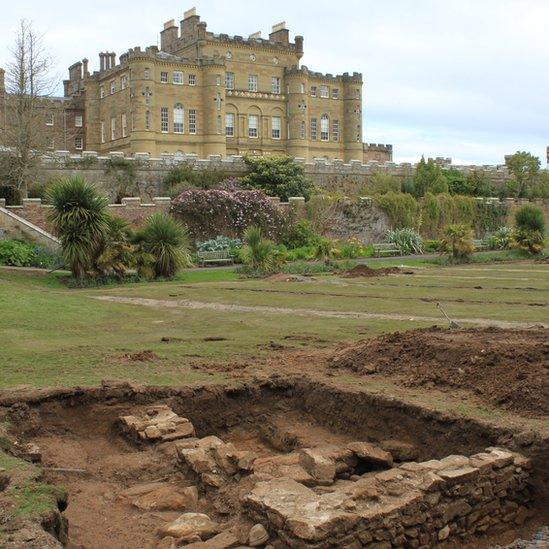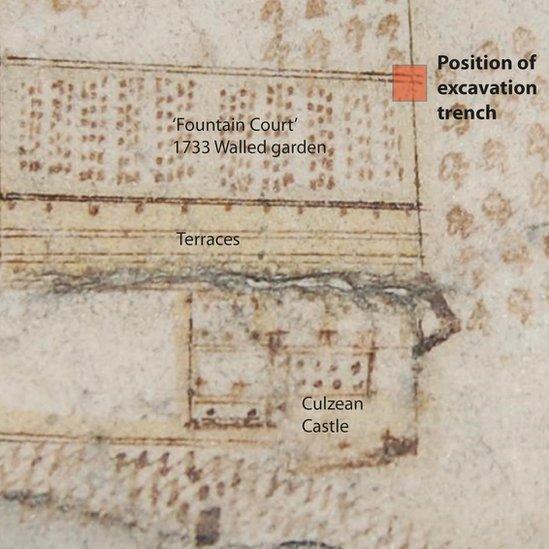Lost 18th Century walled garden unearthed at Culzean Castle
- Published

Remains of an 18th Century garden have been found at Culzean Castle during excavation works to install a new drainage system.
Archaeologists working for the National Trust for Scotland (NTS) found the walled enclosure under the lawn in the South Ayrshire castle's Fountain Court.
NTS said it probably functioned as a kitchen garden from about 1733 to 1782.
As was the fashion in the late 18th Century, a new walled garden was then built out of sight from the house.
This would have allowed the former site to be landscaped to improve the views from the castle.

The walled garden is shown on an estate map of Culzean drawn by John Foulis in 1755
Derek Alexander, head of archaeological services for the NTS, said: "Although it was marked on the estate map, until now we never knew that any of it survived below the immaculate turf of the Fountain Court.
"This work has given us the perfect opportunity to explore a hidden aspect of Culzean's past and, once the lawn is re-seeded, I can't imagine the gardeners will want us digging more holes!"
The garden is thought to be from work undertaken by Sir John Kennedy of Culzean, 2nd Baronet, in 1733.
It can be seen on an estate map of Culzean drawn by John Foulis in 1755.
The garden was abandoned in 1782 and the walls were demolished by Robert Adam's workmen as part of a wide range of improvements carried out around the castle.
The drainage works, currently being carried out at Fountain Court, aim to make it suitable for staging large public events.